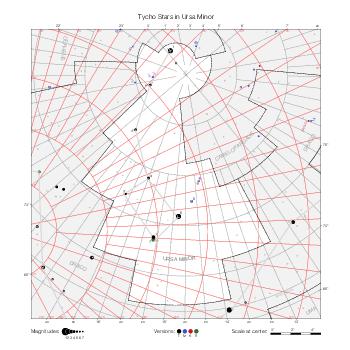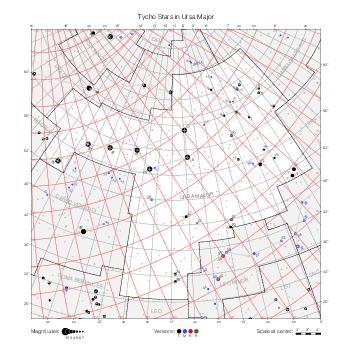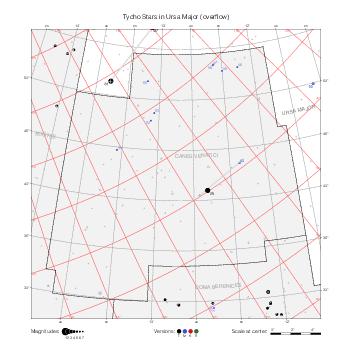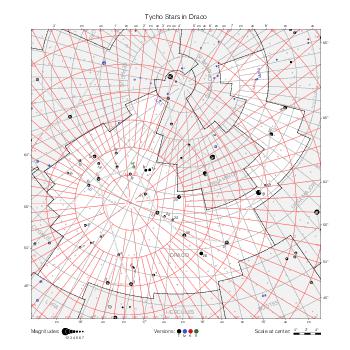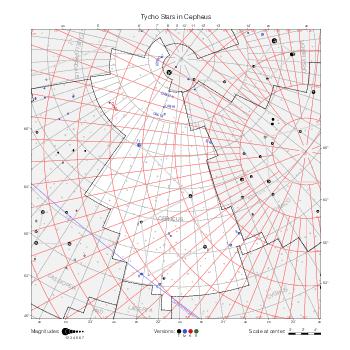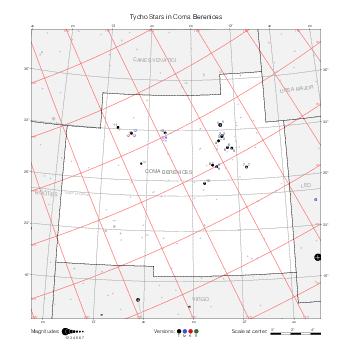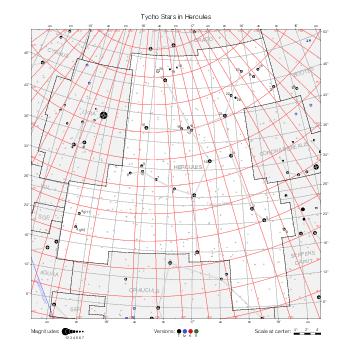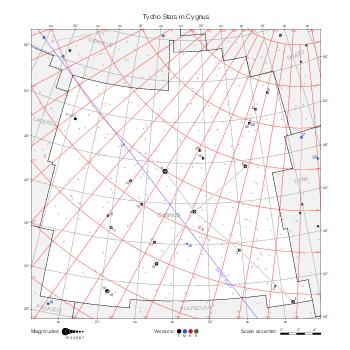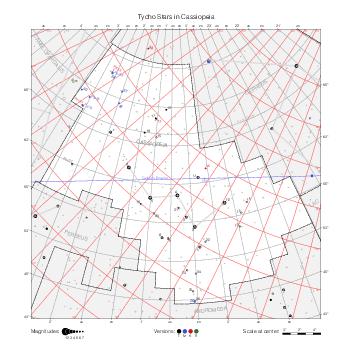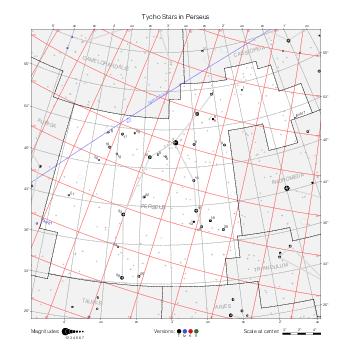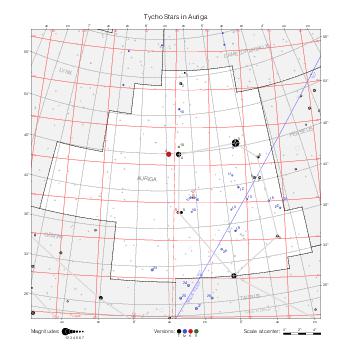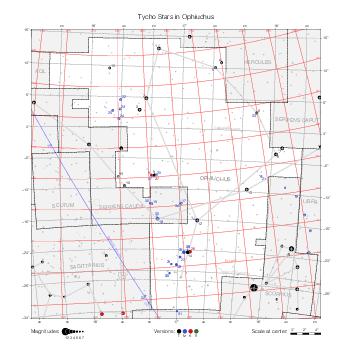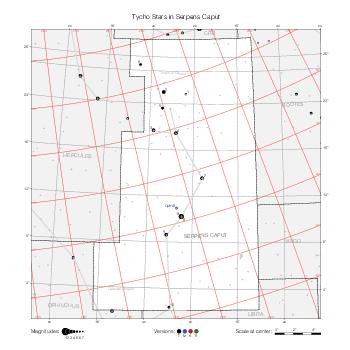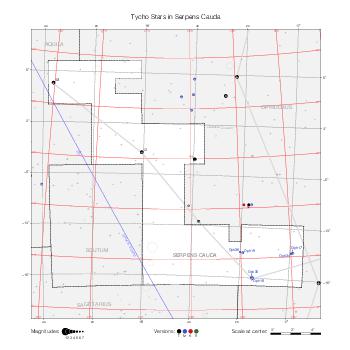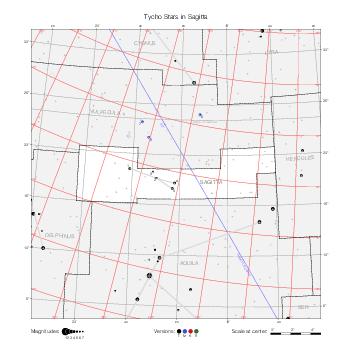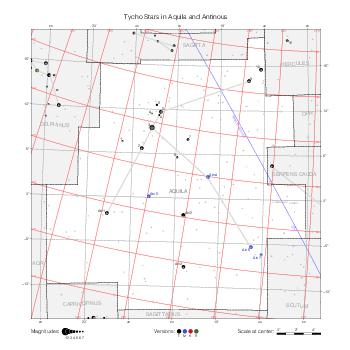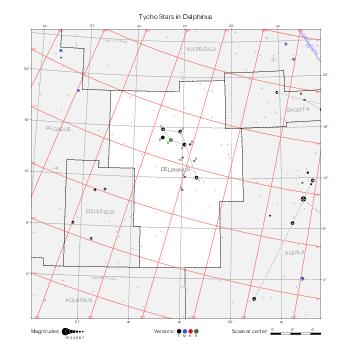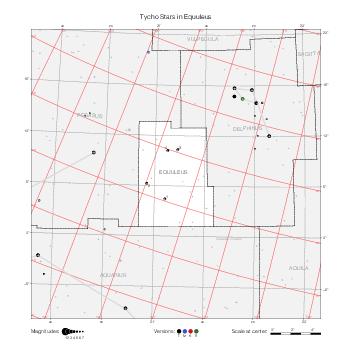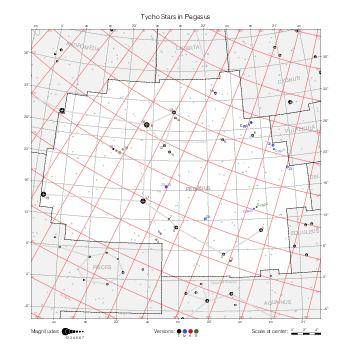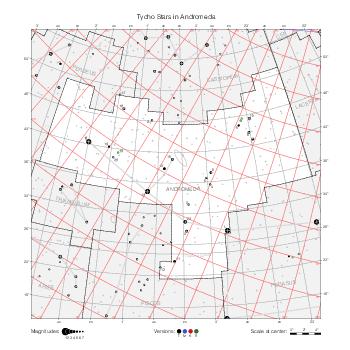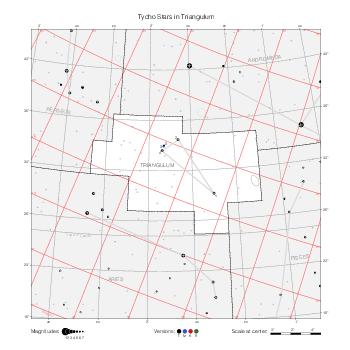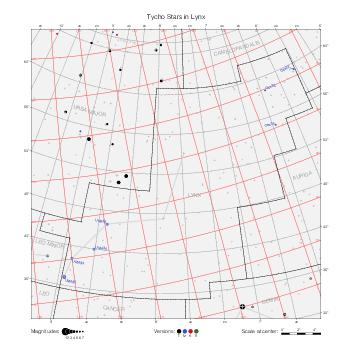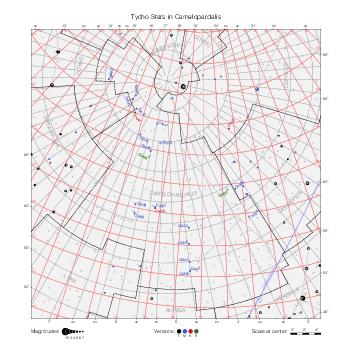Description
The star maps below represent the stars of Tycho Brahe's catalog along with bright stars according to modern catalogs. The corrections mentioned on the catalog page have been applied in order to avoid excessive confusion.
The maps use the equatorial and ecliptic coordinate systems corresponding to the epoch and equinox of Tycho's catalogs, namely 1600 Annum Completum, or January 1, 1601 of the Julian calendar (still in use in Denmark at the time), or
| Julian Day | 2,305,824 |
| Besselian epoch | B1601.0304… |
| Julian epoch | J1601.0376… |
Catalog versions
The maps represent Tycho's stars in the positions given by the three main versions (manuscript, Progymnasmata, Kepler) as well as in Rawlins's [1] corrected positions (which affect only about 40 stars).
The legend on the maps associates colors with versions represented by letters according to the following table.
| Letter | Version |
|---|---|
| T | Progymnasmata version (1602 edition) |
| M | Manuscript version from Dreyer |
| K | Kepler's version from Tabulæ Rudolphinæ |
| R | Manuscript version from Rawlins |
When multiple versions give the same coordinates, the colors follow the same order of precedence as that table. Differences in star magnitudes across versions are not represented.
All the stars in the Progymnasmata catalog are present in the manuscript and Kepler's versions so that, if a star is represented in the Progymnasmata color only, it implies that the manuscript and Kepler versions provide the same position for it. The stars Eri 20, Gem 30, and Oph 38 are present in the manuscript version only and the stars Cas 46 (Nova 1572), Cyg 27 (Nova 1600), Sgr 1, and Sgr 2 are present in Kepler's version only. Except in these cases, a star being represented only in the manuscript color implies that it is not present in the Progymnasmata version but that Kepler's version provides the same position.
Map features
The general features of the maps are described on the historical catalogs page.
Tycho stars relevant to the map are labeled with an optional constellation abbreviation and number tnum within their constellation.
Maps by constellation
The maps below represent the stars of Tycho Brahe's catalogs one constellation at a time.
The maps follow the same constellation order as in Tycho's manuscript catalog. Antinous is grouped with Aquila and additional maps for Canes Venatici, Monoceros, Lynx, and Camelopardalis have been added so that every Tycho star appears on at least one map.
Zodiacal constellations
Aries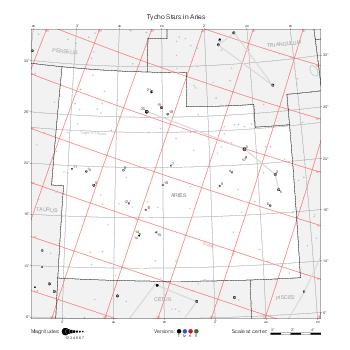
|
Taurus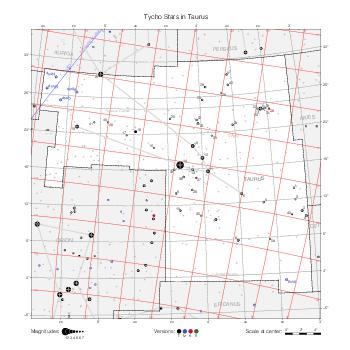
|
Gemini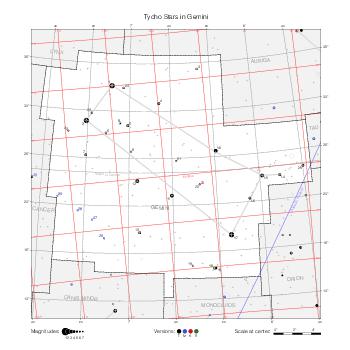
|
Cancer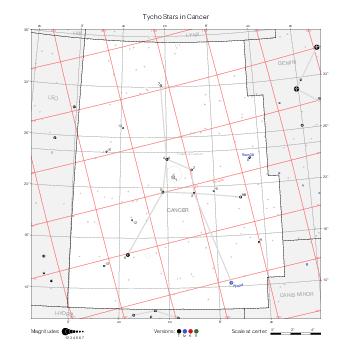
|
Leo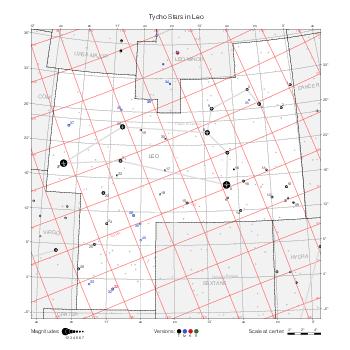
|
Virgo
|
Libra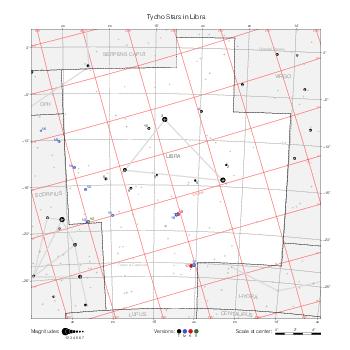
|
Scorpius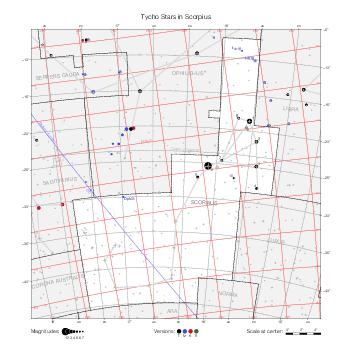
|
Sagittarius
|
Capricornus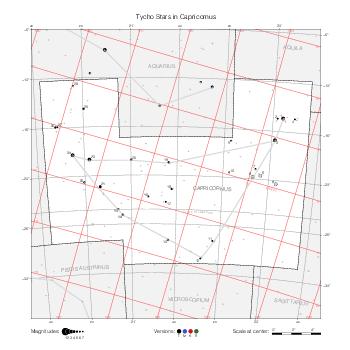
|
Aquarius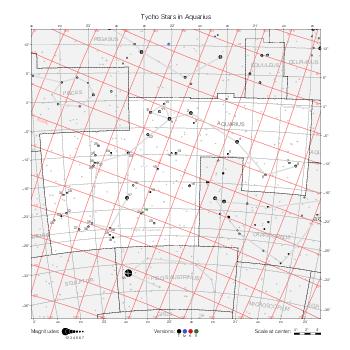
|
Pisces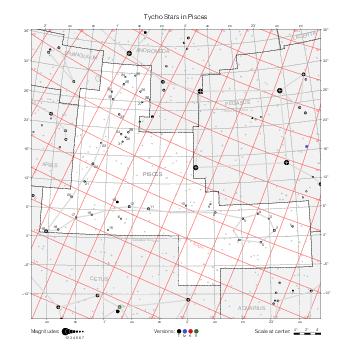
|
Northern constellations
Southern constellations
Cetus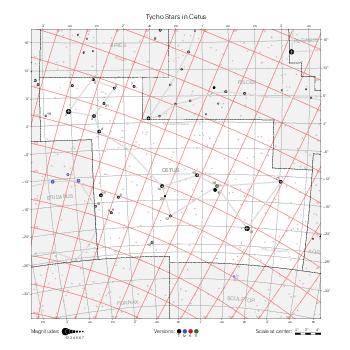
|
Orion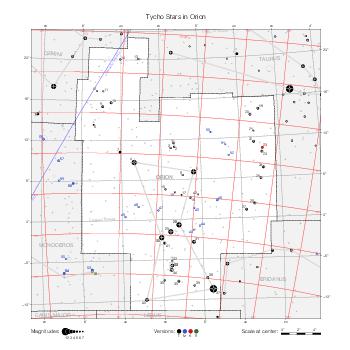
|
Ori in Mon
|
Eridanus (North)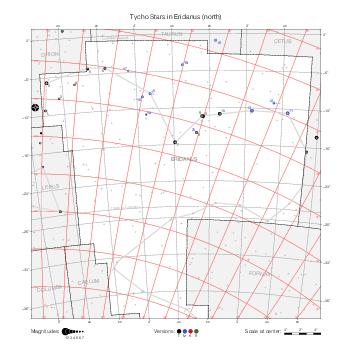
|
Lepus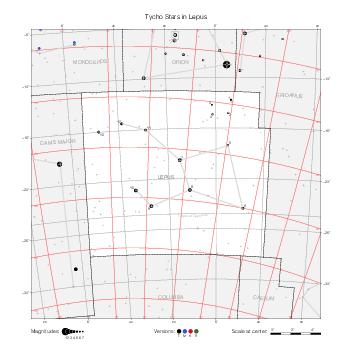
|
Canis Major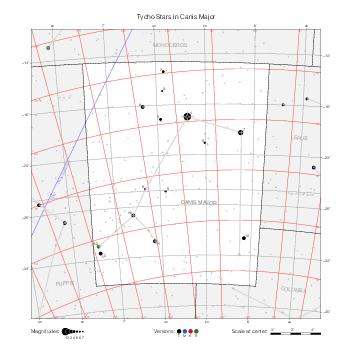
|
Canis Minor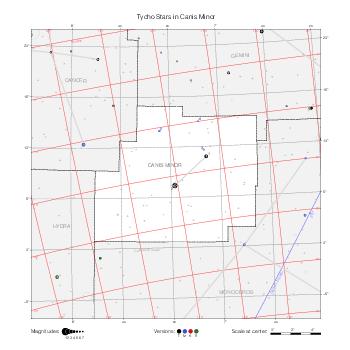
|
Navis (Puppis)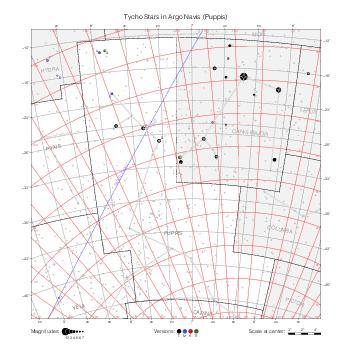
|
Hydra (W)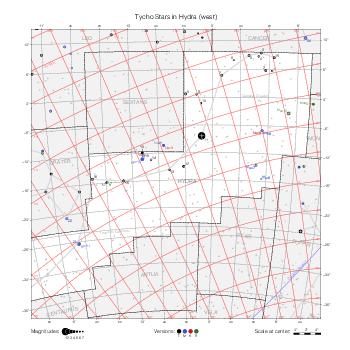
|
Hydra (E)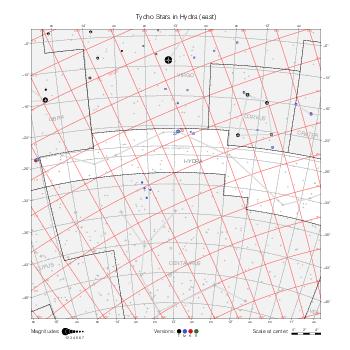
|
Crater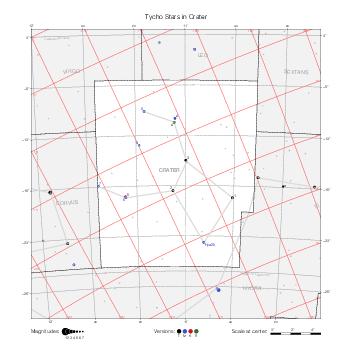
|
Corvus
|
Centaurus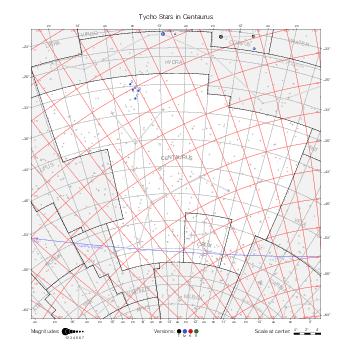
|
Maps by hemisphere
The two maps below give an overall view of Tycho's catalogs one hemisphere at a time.
They are centered on the equatorial poles of the B1875.0 coordinate system, the reference for constellation boundaries, and show the same contents as the maps by constellation.
Northern Hemisphere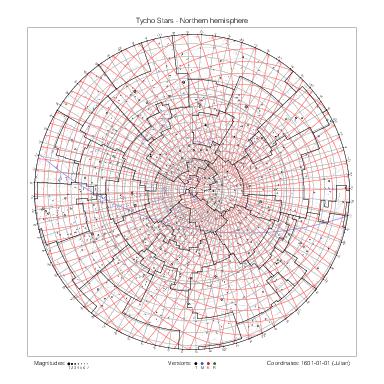
|
Southern Hemisphere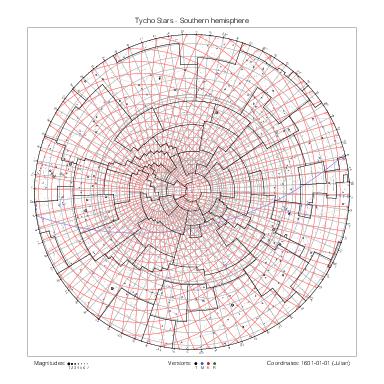
|
References
[1] Dennis Rawlins, Tycho’s Star Catalog, DIO, Vol. 3, October 1993.



